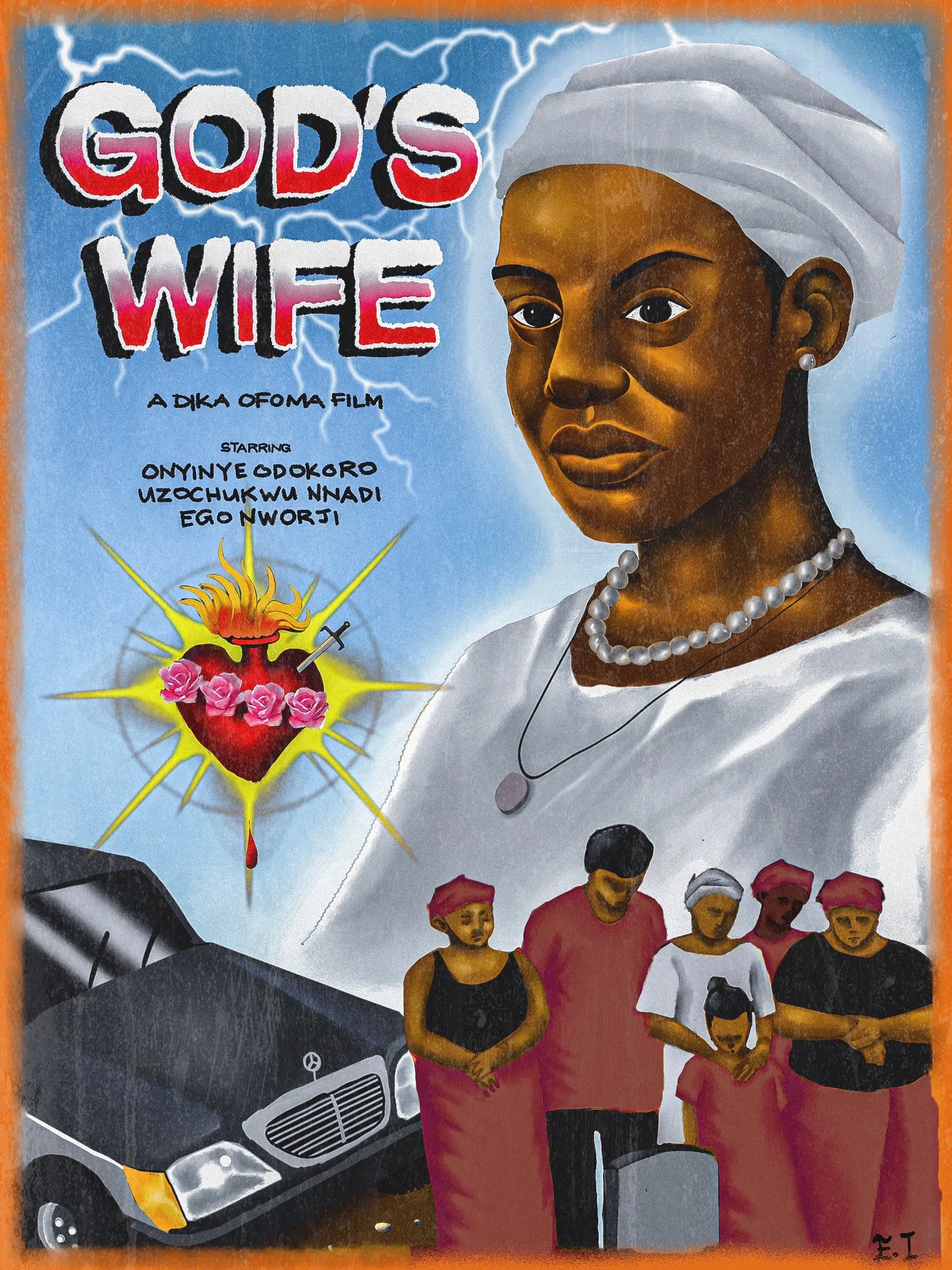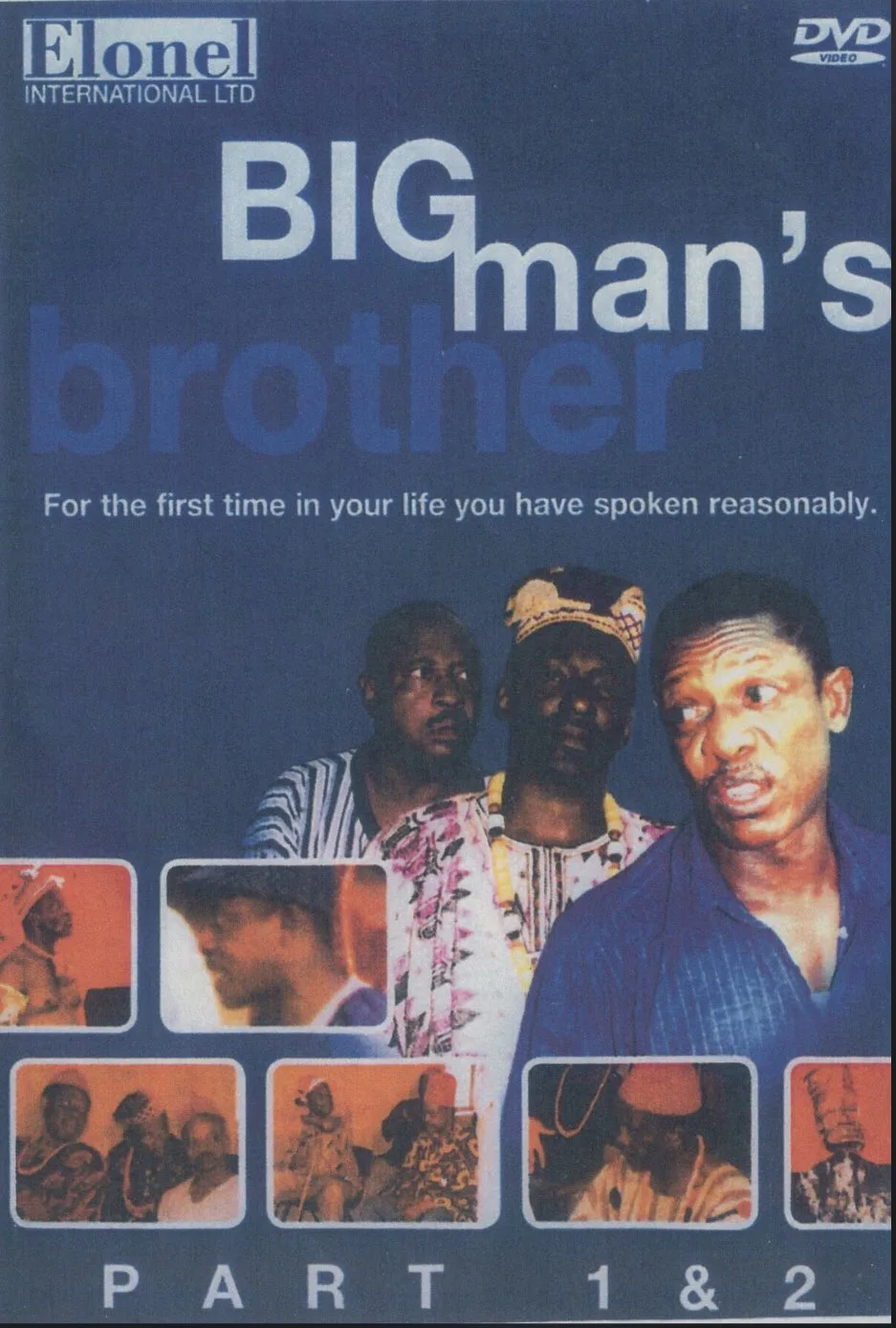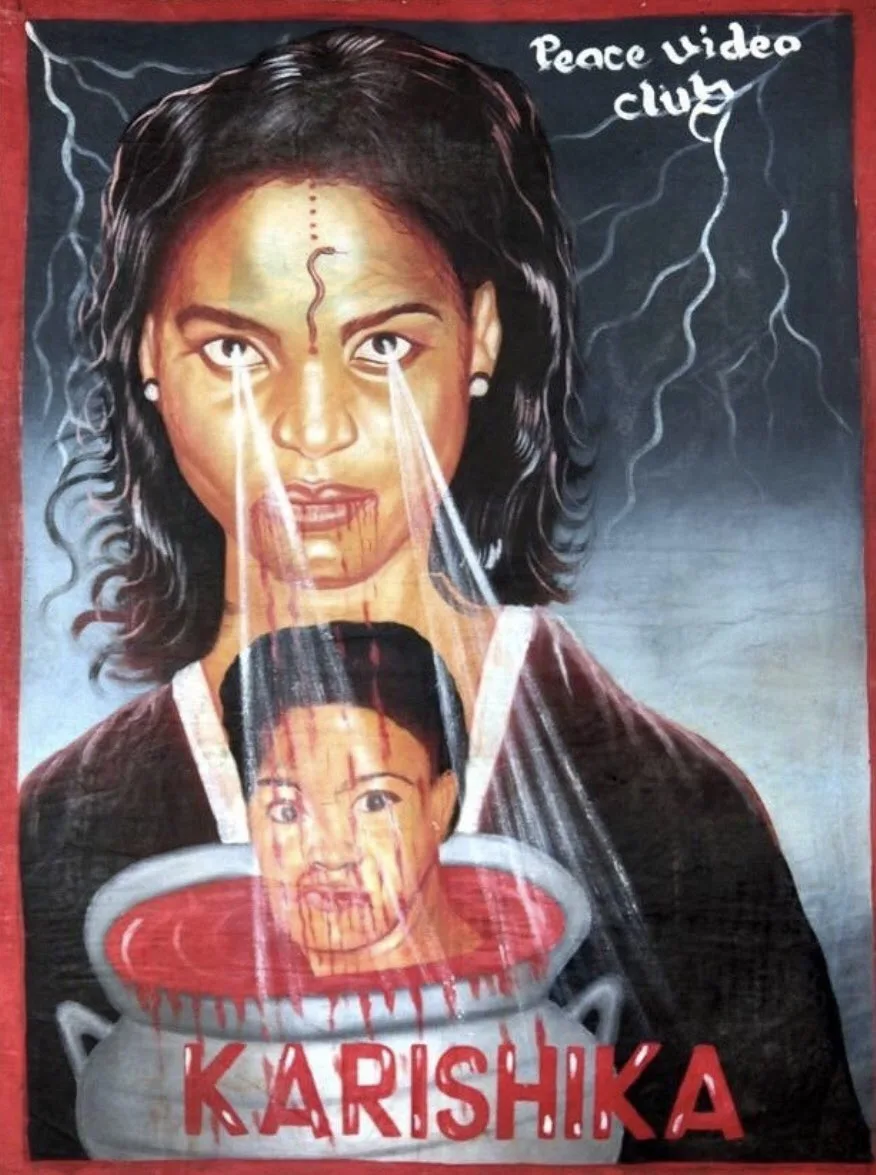Movie posters don’t just tell stories about the films they represent, they also give a glimpse into the culture and period in which they were created. It is an open invitation, and film posters are tailored towards attracting film audiences.
By Seyi Lasisi
A fond memory from childhood is my father returning from his nocturnal job with a polythene bag. I remember with fondness that the bag usually contained treats, fruits, and more importantly, CD cases that assured the possibility of cinematic moments. As I think about those CD cases now, I remember that as an unguided film watcher, deciding what films to see began with physiological flirting through the CD cases, and the first watch depended on who was on the cover. This could be the costumed or expressive faces of Nigerian star actors such as the likes of Babatunde “Baba Suwe” Omidina, Segun Ogungbe, Bolaji “Mr Latin” Amusan, Nkeh Owoh, John “Mr Ibu” Okafor, and numerous others.
Unperturbed about storytelling or acting, I committed to watching a film based on the visual appeal of the CD case. Culled from pivotal scenes in the film, the cover was usually dominated with faces of the film’s stars in various poses and facial expressions. As someone not particularly obsessed as I am now with Nigerian films, this earliest relationship with Nigerian film posters laid the foundation for the importance of a poster in my then-infantile mind.
Recently, Dika Ofoma, Nigerian filmmaker and writer, released the backstory and poster for God’s Wife, his recent project after his 2023 short film, A Quiet Monday. The poster has the animated face of a woman clothed in white, with six others standing beside a grave in a resigned posture. For me, this poster secures what I suspect is Ofoma’s blooming relationship with Old Nollywood storytelling. Recalling my earliest memory with Nigerian film posters from the late 90s to early 2000s, God’s Wife’s poster hints at the flair for nostalgia and a recent improvement that has visited Nollywood. I can’t help but ask, can one judge a film by its cover? I surmise that if my juvenile and impressionable mind can decide to watch a film after only browsing through its cover, it’s possible to judge by that metric.

A film poster is used to promote and advertise a film primarily to persuade paying customers to a theatre or a streaming platform to see it. Film studios and producers often make several posters of varying sizes and content for various markets. These posters normally carry images, mostly of the star actors, with text. Movie posters don’t just tell stories about the films they represent, they also give a glimpse into the culture and period in which they were created. It is an open invitation, and film posters are tailored towards attracting film audiences.
In the filmmaking era now tagged Old Nollywood, there was a fast-paced production of films. Filmmakers cared little about the quality of the storytelling or technical prowess, but instead focused on inundating Nigerians with countless films. This helped the Nigerian film industry secure a spot as one of the largest producers of films in the world. With limited shooting days and hasty post-production, these films made their way to Ebinpejo Lane in Lagos Island, Iweka Road in Onitsha, and Pound Road in Aba. Popular amongst filmmakers and film distributors, these three locations were the cultural and economic hotspots where film distributors, after haggling prices, often acquire a film they distribute across video clubs in the country. The business banter aside, what dominated these locations were the awkwardly cut pictures of star actors affixed to a cluttered background of film posters. From a far distance, one can make out a film poster with its fiercely expressive colours and star actors. These film posters were more often than not chaotic, with a few exceptions here and there.
Taking the conversation to Twitter (Now X), I asked Nollywood audiences about their favourite Old Nollywood posters. There were interesting responses to the tweet. Chris Obi Rapu’s Living in Bondage, Charles Inojie’s Big Man’s Brother, Benson’s End of the Wicked and Chika Christian Onu’s Karashika are film posters people frequently mentioned.

What stood out to me in all of these posters is their propensity to induce fright while also capturing a story. End of the Wicked, for example, with its imagery, is one poster that could best be described as gory in that era. With Karashika, there’s a head in a blood-filled cauldron. Without pretence or impediment, they swiftly convey important details about the films.


Teco Benson’s State of Emergency released in the year 2000, has a film poster that is a slight departure from the flashy film posters that had monopolised the film industry. Although it still retained the star-studded style typical of Old Nollywood, the poster told, in minimal doses, a story. The film’s stars (Obinna “Saint Obi” Nwafor, J. T Tom West, and Hanks Anuku) are holding guns and behind them, sprawled on the floor, are people they held hostage, giving off the impression of a crime-thriller. Amaka Igwe’s Rattlesnake is a variant with this kind of execution.


Tchidi Chikere’s Blood Sister is another exception. In the poster, there are just two faces; Omotola Jalade Ekehinde and Genevieve Nnaji. They both wear a menacing look, and with those facial expressions, their backs are turned. The poster impresses on the beholders’ mindset a possible strained relationship between the sisters. And watching the film viewers witnessed firsthand the maliciousness of one towards the other.

Despite Nollywood’s affinity for star-studded film posters, there has been an upsurge in minimalist and artsy alternative film posters, which Nollywood directors and producers are now opting for. This move towards minimalism in film poster design which lacks the flamboyance of previous decades, is a move towards emphasising the power of subtle storytelling. The objective is to show that less is more and that there are various ways in which a film poster can be designed. Iyebiye “Kaizen Kreativ” Adeitan’s poster of Kayode Kasum’s Afamefuna is a recent example of this new wave poster design. In the design, a young and naive boy, spotting a traditional Igbo cap is looking across the Onitsha Bridge and the Third Mainland Bridge in Lagos. This informs a subtle migration theme and a quest for wealth in another land.

While researching this piece, I spoke with Rex Posters, one of Nollywood’s designers, who designed the poster for Funke Akindele’s A Tribe Called Judah, Battle on Buka Street, and Omo Ghetto, about the importance of a film’s poster. As he notes, the whole essence is to pique audiences’ curiosity. It is what the audience notices first, and it speaks strongly on the need to capture in important details, the genre and story a film is telling. “A film’s poster helps build anticipation. The audience’s willingness to watch a film can be first measured from their contact with a movie poster. When viewers see their favourite star actors on the poster before the trailer is available, it helps boost marketing”, Rex Posters said.
Nate, another designer credited with designing the poster for WAR: Wrath and Revenge, Momiwa, and Dead of Night, corroborates Rex Posters’ assertions. For Nate, film poster design is the art of telling stories through composition and images to create curiosity. According to Nate, film posters have tripartite aims: driving audiences’ curiosity, creating a mental engagement within the audience, and inspiring a buying or viewing decision. Even though Nigerian designers are considered minor stakeholders, film posters have continually played a major role in the marketing of a film. Nate echoes Rex Posters’ comment, saying, “The biggest element a poster can have is storytelling — the ability to sell and tell a story”. Barren of its innate ability to pique audiences’ curiosity, a film poster is, in the words of Nate, “merely a collage of actors’ pictures.”
A shared opinion between Rex Posters and Nate is the unlimited and unrestricted pathway to using film posters. While Rex welcomes the idea of minimalist film posters, he believes art is a vast process. “There are different ways one can tell stories and it’s essential when producers utilise every means possible. The story can be told by any means and utilising minimalist storytelling is also an important factor”, the designer said. “We are operating in an industry where we can’t all do the same thing. I strongly believe we are in a space for every kind of art to thrive. As long as the storytelling intent is there and it’s aesthetically pleasing, I believe every kind of poster can thrive”, Nate concluded.
Kaizen Kreativ has a similar but variant point of view. Having worked with numerous producers, the designer, who designed the poster for Cordelia, Ayinla, and Moses Ipadeola’s Fate, has come to realise that Nollywood producers make creative decisions based on a film’s requirement and medium of distribution. And that no matter how pleasing and popular your style of poster is as a designer, the producers know what they want. “Producers going through the film festival circuit are going to make arthouse posters. Those going to the cinema will make star-studded posters. So, it’s not really a case of more filmmakers opting for minimalist posters but rather a case of the medium and market they are trying to infiltrate.” Kaizen Kreativ concluded. For context, the poster for Ipadeola’s Fate is minimalist and artsy. Featuring a masquerade, the film’s title and production credits, the poster is designed to be a visual metaphor for the story. When one looks at Rex Posters’ design for A Tribe Called Judah on the other hand, it has the traditional requirements of a film poster: faces of the stars and its ability to tell a story.


In recent years, Nollywood has embraced change. While the quality of storytelling in Nollywood has not exactly evolved, the technical aspects, poster design being one, is one area in filmmaking that Nollywood is improving. As Rex Posters opined, the film industry has a better understanding of what a movie poster represents. And with this realisation comes the motivation for improvement. Nate concluded by saying, “In a few years, Nollywood film posters will be an industry on its own where we will have more designers and great ideas competing. We are having more designers coming up who aren’t just collaging pictures of actors but doing so with a thought process. Observing the growth in the last decade, there is more thought process attached to film poster design.”
Seyi Lasisi is a Nigerian creative with an obsessive interest in Nigerian and African films as an art form. His film criticism aspires to engage the subtle and obvious politics, sentiments, and opinions of the filmmaker to see how they align with reality. He tweets @SeyiVortex. Email: Seyi.lasisi@afrocritik.com.
Cover Photo: Dika Ofoma’s God’s Wife| @DikaOfoma (on X)




